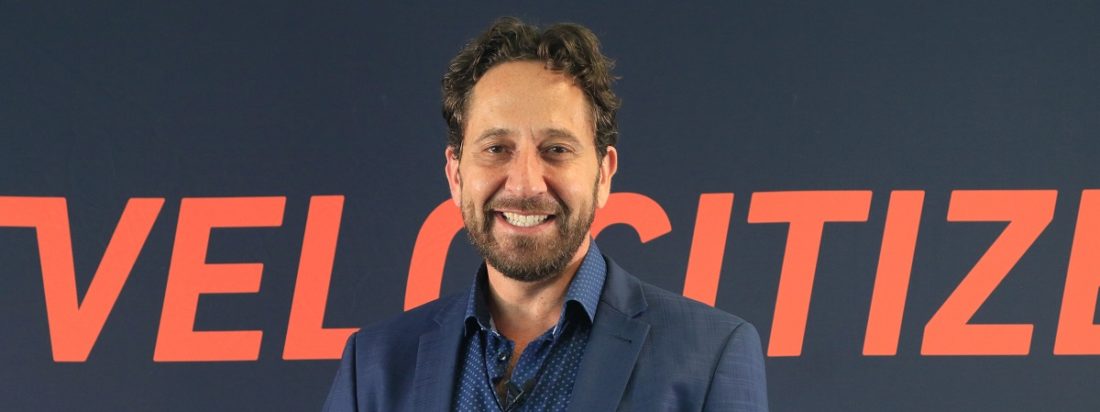One of the biggest brand differentiations you can drive is using technology and personalization, being relevant at the right stage of the journey.
Adam Good is Executive Director of Marketing Technology for WPP Australia and New Zealand, where he heads the WPP AUNZ Group agencies. As a leading creative transformation agency, WPP creates innovative solutions through an integrated solution of communications, experience, commerce, and technology.
In this episode of Velocitize Talks, Good shares his insights into how brands can utilize personalization and voice-driven marketing to strengthen the customer experience, and how to measure Martech ROI.
Driven by Voice (2:03)
I see voice as part of a marketing-tech strategy. It drives you towards more automation. It drives you into that direction of how to use AI as part of your overall strategy. The output of that is more voice-driven solutions.
As peer-to-peer communication continues to evolve—from emails, phone calls, and text messaging to social media, messaging apps, and voice-based assistants—customers regularly interact with voice. In 2019, an estimated one-third of the U.S. population interacted with voice at least once per month.
Typical voice interactions into your phone or to a speaker is conversational. Building customer relationships through voice can be very challenging for brands since the technology remains limited.
According to Good, “The response back on many brands is like a small child. They get the answers wrong or they’re not helpful but that’s changing quickly.” Conversational AI represents the next wave of voice automation. This is due to authentically human-sounding, AI-powered bots.
In fact, the conversational AI platform market will exceed $12B by 2025, according to a study by Research and Markets. As brands figure out how to interact with customers via conversational AI platforms, martech (Marketing Technology) and marcom (Marketing Communications) teams will have a new playing field to explore.
Loyalty is Everything (4:52)
I think personalization is something that consumers really like.
Brand loyalty is the holy grail for any company. And personalization has become a vehicle for delivering brand loyalty and advocacy. When a customer has a great experience, it solidifies their loyalty. Conversely, if it is a bad experience, it can be a turn off.
Loyalty is the final step in the customer lifecycle. There are many other earlier steps essential to building long-term customer relationships. These can include brand discovery, product education, purchasing process, and post-engagement purchase engagement.
The best brands build mutually beneficial relationships with customers that translate into a higher customer lifetime value. Good notes that if customers are given the information they require, or they need more information, brands should focus on that conversation. They shouldn’t just suddenly push something on the customer, like a marketing survey.
Generation Personalization (5:39)
I don’t think consumers really understand the complexities of personal data and what that means. Companies have a real responsibility to make customers aware of what data they have and how they’re going to use that.
Time and time again, experts have recommended, consumers have demanded, and laws have required that brands detail what data they are collecting and how they intend to use it. Customer data is crucial for good customer service, competitive prices, and better products.
Good recognizes the generational gap that exists when it comes to data privacy. He cites younger generations who have continuously seen the benefit of releasing their data and providing experiences tailored to them. In other words, they’re quite comfortable sharing their data.
Older generations, however, can be confused about how their data can benefit them. In their experience, you only tell people certain things about yourself, Good says. It’s up to brands to create a clear value proposition for their customers, building a trusting relationship over time.
Invest in Martech and Marcom (7:39)
I haven’t met any clients that say, ‘I invested X amount of dollars and I’m completely happy with where I need to be.’ There’s always this feeling that they could go further.
The rapid changes in the martech market over the past two decades have resulted in brands investing heavily in a variety of tools, and ultimately a consolidation of both tools and effort. Custom content management tools, outbound email solutions, ad tech, mobile apps and websites have all been a part of the martech and marcom mix that people have been moving through to land on a solution. But then what?
Good says that once they’ve delivered or used a service for some time, they begin to consider the ROI. Marketing ROI can be used to measure the ROI of a specific marketing channel, activity, campaign, or the entire marketing function. It is common for brands to analyze their investment and benefits before renewing a service.
Book Club (11:00)
It’s great reading in regards to research on how companies can be growing at that exponential rate; what are the traits, what are the behaviors that need to drive.
Good recommends the book “Exponential Organizations: Why New Organizations are Ten Times Better, Faster, Cheaper than Yours (and What To Do About It),” by Salim Ismail. An Exponential Organization (ExO) is an organization whose impact is “disproportionally large” compared to other businesses because of its use of new organizational techniques. The new techniques can then leverage accelerating technologies.
The book identifies an ExO’s characteristics and contrasts an ExO with an outdated, matrixed, linear organization. One such characteristic of an ExO is the presence of a “Massive Transformative Purpose,” which refers to its aspirational purpose.
For more information on WPP, check out their website and follow them on LinkedIn, Instagram, and Twitter at @WPP_AUNZ. To stay up to date with Good, follow him on Twitter or LinkedIn.
This interview was originally recorded in 2019 in Sydney, Australia, and has been updated accordingly.
